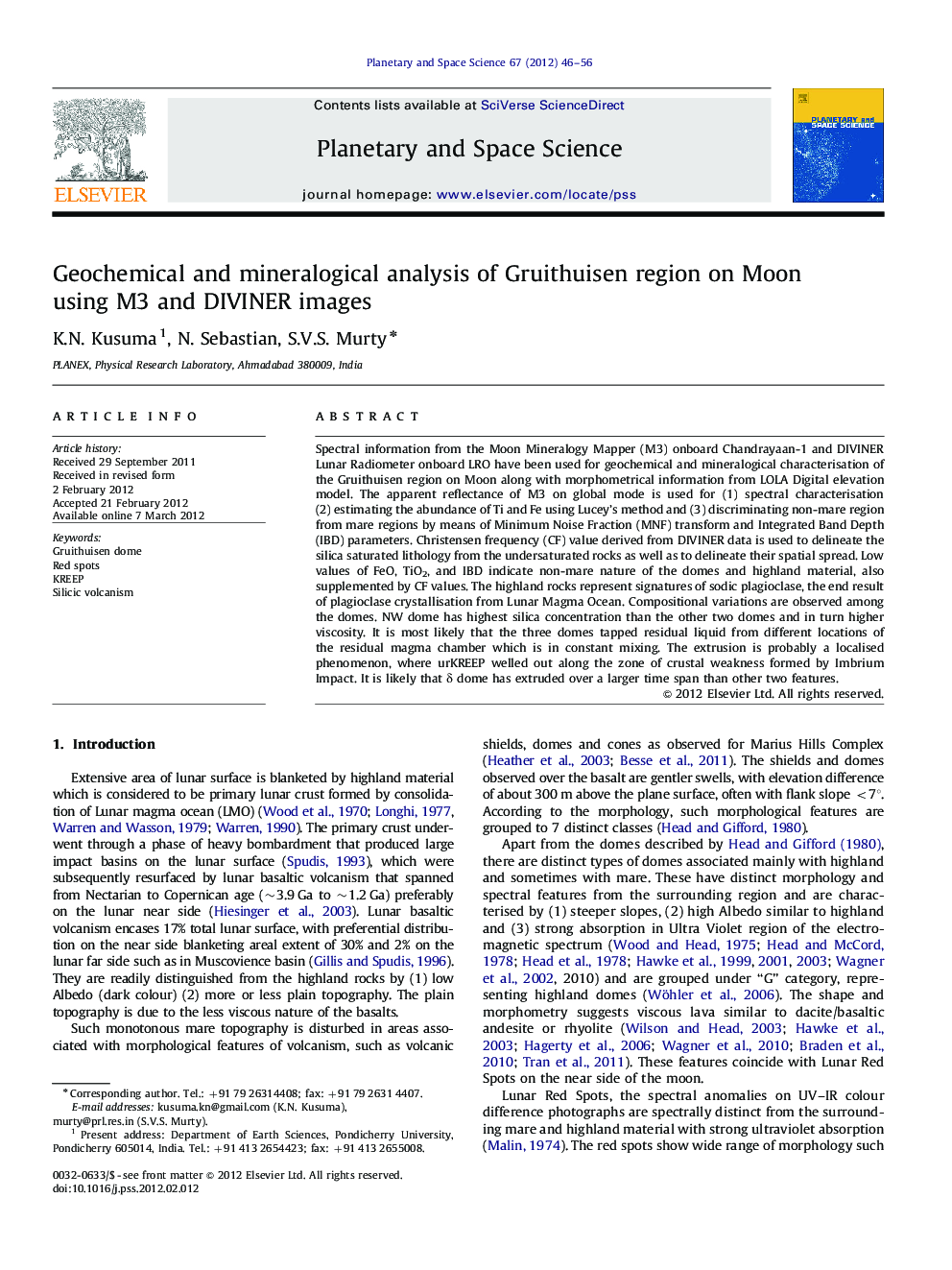| کد مقاله | کد نشریه | سال انتشار | مقاله انگلیسی | نسخه تمام متن |
|---|---|---|---|---|
| 1781526 | 1022286 | 2012 | 11 صفحه PDF | دانلود رایگان |

Spectral information from the Moon Mineralogy Mapper (M3) onboard Chandrayaan-1 and DIVINER Lunar Radiometer onboard LRO have been used for geochemical and mineralogical characterisation of the Gruithuisen region on Moon along with morphometrical information from LOLA Digital elevation model. The apparent reflectance of M3 on global mode is used for (1) spectral characterisation (2) estimating the abundance of Ti and Fe using Lucey's method and (3) discriminating non-mare region from mare regions by means of Minimum Noise Fraction (MNF) transform and Integrated Band Depth (IBD) parameters. Christensen frequency (CF) value derived from DIVINER data is used to delineate the silica saturated lithology from the undersaturated rocks as well as to delineate their spatial spread. Low values of FeO, TiO2, and IBD indicate non-mare nature of the domes and highland material, also supplemented by CF values. The highland rocks represent signatures of sodic plagioclase, the end result of plagioclase crystallisation from Lunar Magma Ocean. Compositional variations are observed among the domes. NW dome has highest silica concentration than the other two domes and in turn higher viscosity. It is most likely that the three domes tapped residual liquid from different locations of the residual magma chamber which is in constant mixing. The extrusion is probably a localised phenomenon, where urKREEP welled out along the zone of crustal weakness formed by Imbrium Impact. It is likely that δ dome has extruded over a larger time span than other two features.
► We used spectral information from Moon Mineralogical Mapper (M3) and DIVINER datasets to study the Gruithuisen domes on Moon.
► Gruithuisen domes are localised felsic massifs.
► Analysis shows compositional variation among the three domes.
► Domes must have formed by drawing urKREEP of varying composition from different parts of the residual melt pool.
► Delta must have extruded for longer duration.
Journal: Planetary and Space Science - Volume 67, Issue 1, July 2012, Pages 46–56